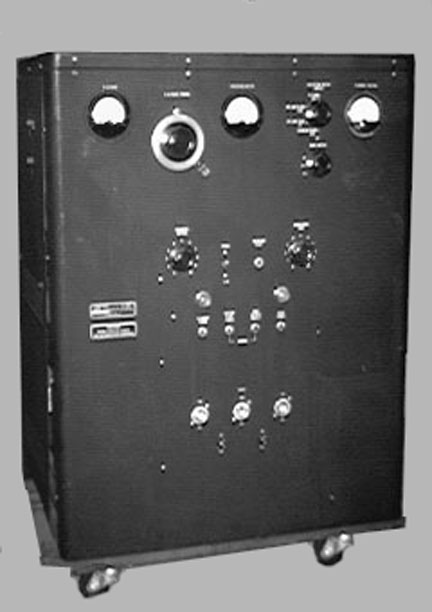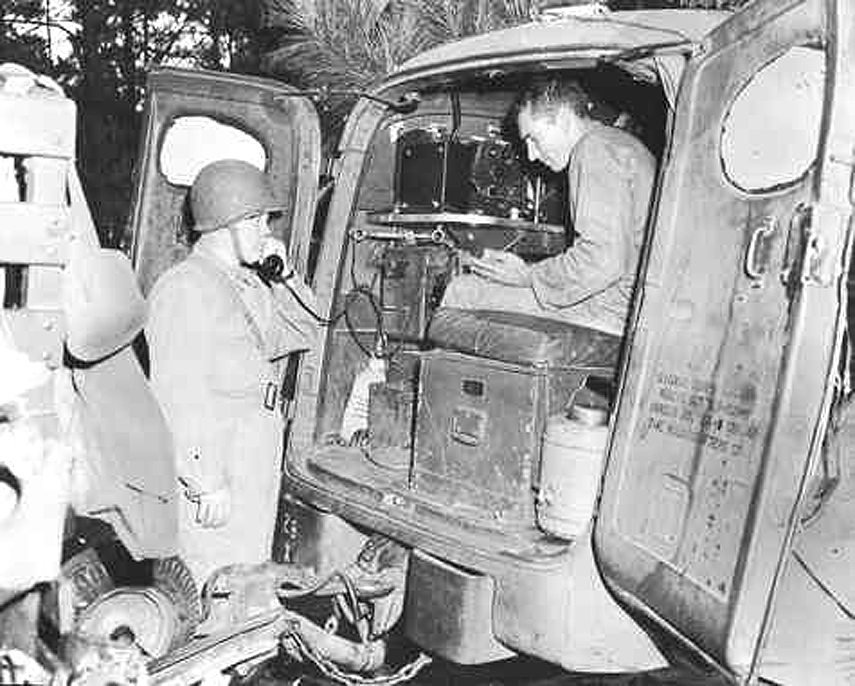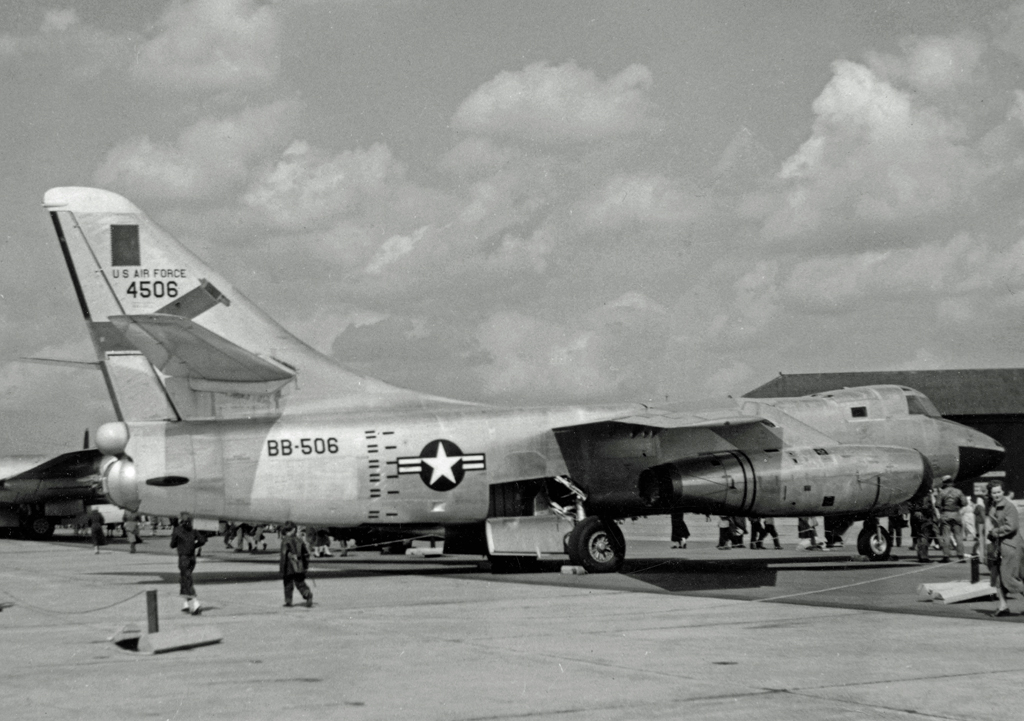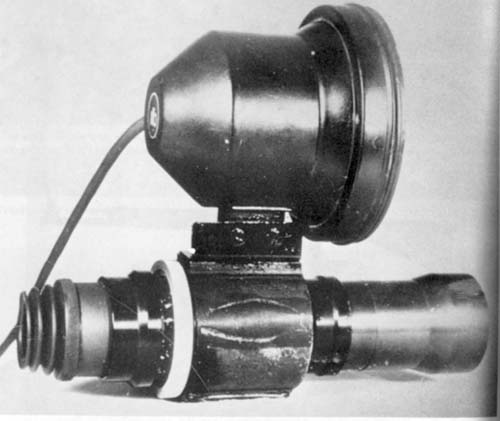|
Hallicrafters
The Hallicrafters Company manufactured, marketed, and sold radio equipment, and to a lesser extent televisions and phonographs, beginning in 1932. The company was founded by William J. Halligan and based in Chicago, Illinois, United States. In 1966 Halligan sold the company to the Northrop Corporation and Halligan family involvement ended. Northrop ran the company until the early 1970s, but by this time, fierce Japanese competition was putting pressure on the US domestic electronics market. Northrop sold the company name (but kept the factory, by then located in Rolling Meadows, a Chicago suburb) in 1975, bringing non-military electronics production to an end, and turning the plant into Northrop Corporation's Defense Systems Division. History William J. Halligan (1898–1992), founded Hallicrafters Company in Chicago in late 1932. Prior to this, he had been involved in radio parts sales for some years but decided the time was right for a handcrafted amateur radio receiver - ... [...More Info...] [...Related Items...] OR: [Wikipedia] [Google] [Baidu] |
BC-610
The BC-610 was a radio transmitter based on the Hallicrafters HT-4 and was used by the U.S. Army Signal Corps during World War II. History In the early 1940s, the U.S. military sought a high-powered radio transmitter capable of infallible voice communications over 100 miles (160 km), sturdy enough to work in all conditions, flexible enough to be able to cover a wide range of frequencies, self-powered and able to operate in motion or at fixed locations. The Hallicrafters HT-4 transmitter was chosen from units available from various U.S. radio manufacturers. The HT-4 was designed for amateur radio use and had been commercially available for several years at a price of approximately $700, rivaling the cost of a car. It was considered compact and stable for its era and could deliver in excess of 300 watts of power for voice or MCW communications and 400 watts during Morse code operation. As was typical in physically large vacuum tube equipment, the manual cautions power output is ... [...More Info...] [...Related Items...] OR: [Wikipedia] [Google] [Baidu] |
SCR-299
The SCR-299 was a U.S. Signal Corps mobile military communications unit used during World War II. History The SCR-299 "mobile communications unit" was developed to provide long-range communications during World War II. The US Military sought improvements of range, flexibility and durability over its existing SCR-197 and SCR-597 transmitters. In 1942, Hallicrafters Standard HT-4 was selected as the SCR-299's transmitter, known subsequently by its military designation as the BC-610. The SCR-299 was first used on November 8, 1942 during Operation TORCH involving companies of the 829th Signal Service Battalion establishing a radio net that could exchange messages between beach-landed forces and bases in Gibraltar. Despite initial problems unloading the sets from convoy ships, the SCR-299s served until the installation of permanent Army Command and Administrative Network stations. According to US Army military historians, "General Dwight Eisenhower credited the SCR-299 in his successful ... [...More Info...] [...Related Items...] OR: [Wikipedia] [Google] [Baidu] |
Raymond Loewy
Raymond Loewy ( , ; November 5, 1893 – July 14, 1986) was a French-born American industrial designer who achieved fame for the magnitude of his design efforts across a variety of industries. He was recognized for this by ''Time'' magazine and featured on its cover on October 31, 1949. He spent most of his professional career in the United States, becoming a naturalized citizen in 1938. Among his designs were the Shell, Exxon, TWA and the former BP logos, the Greyhound Scenicruiser bus, Coca-Cola vending machines and bottle redesign, the Lucky Strike package, Coldspot refrigerators, the Studebaker Avanti and Champion, and the Air Force One livery. He was engaged by equipment manufacturer International Harvester to overhaul its entire product line, and his team also assisted competitor Allis-Chalmers. He undertook numerous railroad designs, including the Pennsylvania Railroad GG1, S-1, and T1 locomotives, the color scheme and Eagle motif for the first streamliners of ... [...More Info...] [...Related Items...] OR: [Wikipedia] [Google] [Baidu] |
Blue Streak (missile)
The de Havilland Propellers Blue Streak was a British Intermediate-range ballistic missile (IRBM), and later the first stage of the Europa satellite launch vehicle. Blue Streak was cancelled without entering full production. The project was intended to maintain an independent British nuclear deterrent, replacing the V bomber fleet which would become obsolete by 1965. The operational requirement for the missile was issued in 1955 and the design was complete by 1957. During development, it became clear that the missile system was too expensive and too vulnerable to a surprise attack. The missile project was cancelled in 1960, with US-led Skybolt the preferred replacement. Partly to avoid political embarrassment from the cancellation, the UK government proposed that the rocket be used as the first stage of a civilian satellite launcher called Black Prince. As the cost was thought to be too great for the UK alone, international collaboration was sought. This led to the forma ... [...More Info...] [...Related Items...] OR: [Wikipedia] [Google] [Baidu] |
Cold War Era
The Cold War is a term commonly used to refer to a period of geopolitical tension between the United States and the Soviet Union and their respective allies, the Western Bloc and the Eastern Bloc. The term '' cold war'' is used because there was no large-scale fighting directly between the two superpowers, but they each supported major regional conflicts known as proxy wars. The conflict was based around the ideological and geopolitical struggle for global influence by these two superpowers, following their temporary alliance and victory against Nazi Germany and Imperial Japan in 1945. Aside from the nuclear arsenal development and conventional military deployment, the struggle for dominance was expressed via indirect means such as psychological warfare, propaganda campaigns, espionage, far-reaching embargoes, rivalry at sports events, and technological competitions such as the Space Race. The Western Bloc was led by the United States as well as a number of other First W ... [...More Info...] [...Related Items...] OR: [Wikipedia] [Google] [Baidu] |
Intercontinental Ballistic Missile
An intercontinental ballistic missile (ICBM) is a ballistic missile with a range greater than , primarily designed for nuclear weapons delivery (delivering one or more thermonuclear warheads). Conventional, chemical, and biological weapons can also be delivered with varying effectiveness, but have never been deployed on ICBMs. Most modern designs support multiple independently targetable reentry vehicles (MIRVs), allowing a single missile to carry several warheads, each of which can strike a different target. Russia, the United States, China, France, India, the United Kingdom, and North Korea are the only countries known to have operational ICBMs. Early ICBMs had limited precision, which made them suitable for use only against the largest targets, such as cities. They were seen as a "safe" basing option, one that would keep the deterrent force close to home where it would be difficult to attack. Attacks against military targets (especially hardened ones) still demanded th ... [...More Info...] [...Related Items...] OR: [Wikipedia] [Google] [Baidu] |
Penetration Aid
A penetration aid (or "penaid") is a device or tactic used to increase an intercontinental ballistic missile (ICBM) warhead's chances of penetrating a target's defenses. These can consist of both ''physical devices'' carried within the ICBM (as part of its payload), as well as ''tactics'' that accompany its launch or flight path, operate as either passive or active counters, and may include one or more of the following concepts: * The missile booster can have a short burn time, and/or (if existing) the MIRV bus carrying the nuclear warheads can have some form of stealth technology, thereby hindering detection before the warhead reentry vehicles are released. * MIRV and MRV (instead of single warhead missiles) themselves largely improve penetration since there are many more warheads to destroy than missiles, which may saturate the defensive system's stock of weapons. However, these technologies are very demanding since they require the ability to highly miniaturize both the physics ... [...More Info...] [...Related Items...] OR: [Wikipedia] [Google] [Baidu] |
Wilton, Connecticut
Wilton is a town in Fairfield County, Connecticut, United States. As of the 2020 census, the town population was 18,503. In 2017, it was the sixth-wealthiest town per capita in Connecticut, the wealthiest U.S. state per capita. Officially recognized as a parish in 1726, Wilton today is a residential community with open lands, historic architecture such as the Round House, and many colonial homes. Many residents commute to nearby cities such as Stamford or New York City. Wilton is home to many global corporations such as ASML, Breitling SA, Cannondale Bicycle Corporation, Melissa & Doug, and formerly Deloitte. It is also home to AIG Financial Products, whose collapse played a pivotal role in the financial crisis of 2007–2008.Behind Insurer’s Crisis, Blind Eye to a Web of Risk ''< ... [...More Info...] [...Related Items...] OR: [Wikipedia] [Google] [Baidu] |
Boeing B-52
The Boeing B-52 Stratofortress is an American long-range, subsonic aircraft, subsonic, jet-powered strategic bomber. The B-52 was designed and built by Boeing, which has continued to provide support and upgrades. It has been operated by the United States Air Force (USAF) since the 1950s. The bomber is capable of carrying up to 70,000 pounds (32,000 kg) of weapons,"Fact Sheet: B-52 Superfortress." ''Minot Air Force Base'', United States Air Force, October 2005. Retrieved: 12 January 2009. and has a typical Range (aeronautics), combat range of around 8,800 miles (14,080 km) without aerial refueling. Beginning with the successful contract bid in June 1946, the B-52 design evolved from a straight wing aircraft powered by six turboprop engines to the fi ... [...More Info...] [...Related Items...] OR: [Wikipedia] [Google] [Baidu] |
Douglas B-66 Destroyer
The Douglas B-66 Destroyer is a light bomber that was designed and produced by the American aviation manufacturer Douglas Aircraft Company. The B-66 was developed for the United States Air Force (USAF) and is heavily based upon the United States Navy's A-3 Skywarrior, a heavy carrier-based attack aircraft. Originally, officials intended for the aircraft to be a simple development of the earlier A-3, taking advantage of being strictly land-based to dispense with unnecessary naval features. However, due to the USAF producing extensive and substantially divergent requirements, it became necessary to make considerable alterations to the design, leading to a substantial proportion of the B-66 being original rather than derived from the A-3. The B-66 retained the three-man crew arrangement of the US Navy's A-3; differences included the incorporation of ejection seats, which the A-3 had lacked. Performing its maiden flight on 28 June 1954, the aircraft was introduced to USAF servic ... [...More Info...] [...Related Items...] OR: [Wikipedia] [Google] [Baidu] |
Nike Zeus
Nike Zeus was an anti-ballistic missile (ABM) system developed by the US Army during the late 1950s and early 1960s that was designed to destroy incoming Soviet intercontinental ballistic missile warheads before they could hit their targets. It was designed by Bell Labs' Nike team, and was initially based on the earlier Nike Hercules anti-aircraft missile. The original, Zeus A, was designed to intercept warheads in the upper atmosphere, mounting a 25 kiloton W31 nuclear warhead. During development, the concept changed to protect a much larger area and intercept the warheads at higher altitudes. This required the missile to be greatly enlarged into the totally new design, Zeus B, given the tri-service identifier XLIM-49, mounting a 400 kiloton W50 warhead. In several successful tests, the B model proved itself able to intercept warheads, and even satellites. The nature of the strategic threat changed dramatically during the period that Zeus was being developed. Originally ex ... [...More Info...] [...Related Items...] OR: [Wikipedia] [Google] [Baidu] |
Infrared Homing
Infrared homing is a passive weapon guidance system which uses the infrared (IR) light emission from a target to track and follow it seamlessly. Missiles which use infrared seeking are often referred to as "heat-seekers" since infrared is radiated strongly by hot bodies. Many objects such as people, vehicle engines and aircraft generate and emit heat and so are especially visible in the infrared wavelengths of light compared to objects in the background. Infrared seekers are passive devices, which, unlike radar, provide no indication that they are tracking a target. That makes them suitable for sneak attacks during visual encounters or over longer ranges when they are used with a forward looking infrared or similar cuing system. Heat-seekers are extremely effective: 90% of all United States air combat losses over the past 25 years have been caused by infrared-homing missiles. They are, however, subject to a number of simple countermeasures, most notably by dropping flares beh ... [...More Info...] [...Related Items...] OR: [Wikipedia] [Google] [Baidu] |




.png)




